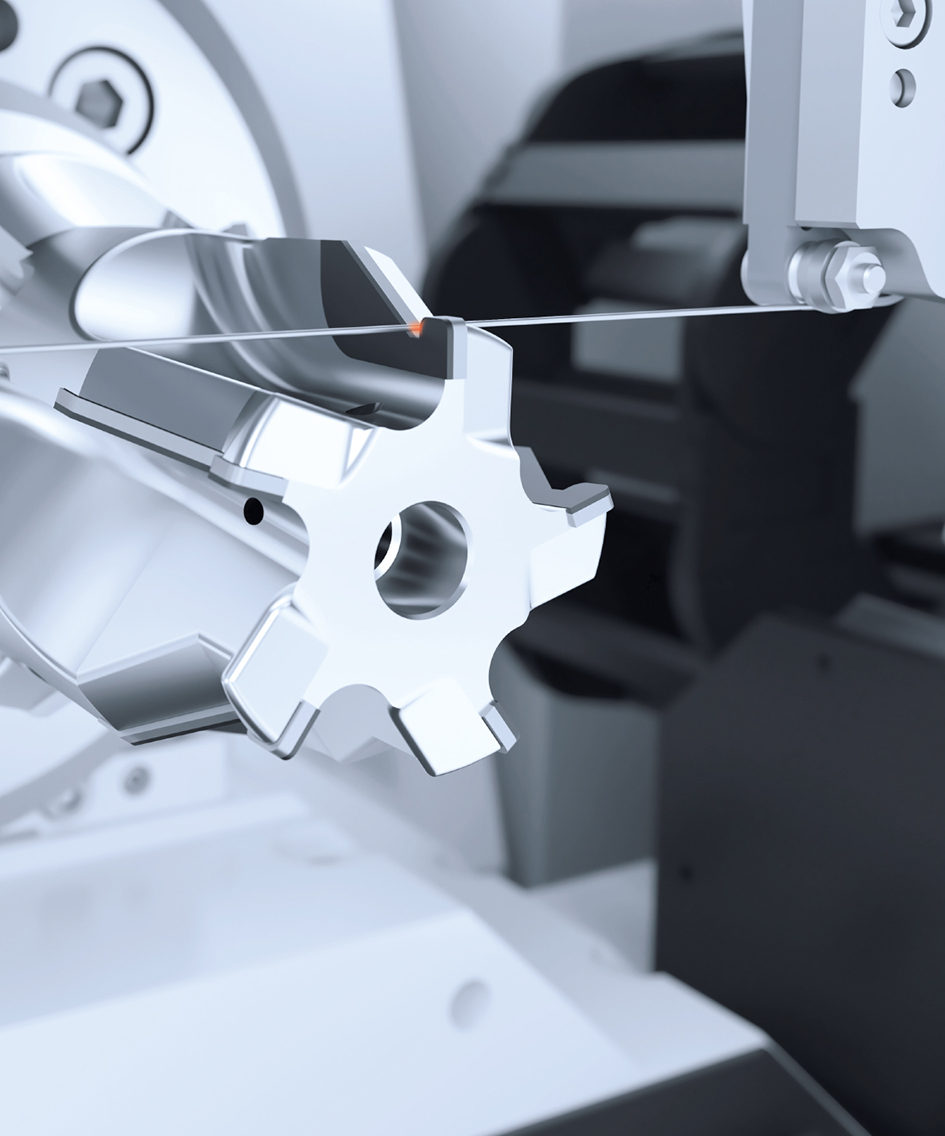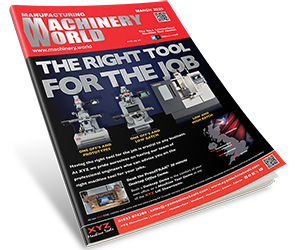How metal-bonded diamond grinding wheels are dressed determines their removal rate and operating life. When they are dressed mechanically, the diamond grains partially lose their sharpness and break away easily. This results in only moderate grain protrusion, which does not allow the metal-bonded grinding wheel to be used at its optimum operating point.
The solution of contactless spark erosion yields structure and retaining force in the diamond grains. VOLLMER, the sharpening specialist based in Biberach, Germany, has now equipped its VPulse 500 wire erosion machine with additional functions to dress diamond grinding wheels using erosive methods. Another advantage of VOLLMER’s technology is that using a hydrocarbon-based dielectric protects the wheel packages’ clamping systems from corrosion.
“Metal-bonded diamond grinding wheels are not only increasingly being used in tool machining. To improve their removal rate and operating life, spark eroding is the recommended dressing method,” says Dr Stefan Brand, CEO of the VOLLMER Group in Biberach. “At EMO Hannover 2019, we demonstrated for the first time how grinding wheels can be dressed using erosive methods with our VPulse 500 wire erosion machine.”
Disadvantages of mechanical dressing
The objective is to release the maximum output of metal-bonded grinding wheels. For a long time, these could not be used at their most effective operating point. One of the reasons is sub-optimal conditioning of the abrasive coating in manufacturing or re-profiling. In the past, this has often led to mechanical dressing methods being used. There are clear disadvantages to using mechanical dressing methods. For example, it is not possible to obtain the required grain protrusion that ensures a ‘cool grind’ and the required cutting ability of the coating, even though this is the precise advantage that the metal bond would support because of the high grain retention strength. In addition, the forces occurring during mechanical dressing are a further disturbance variable to the required accuracy of the grinding wheel contour. This requires great effort to monitor.
High grain protrusion and precise contours
VOLLMER is now offering the functionality needed to profile metal-bonded grinding wheels on the VPulse500 wire erosion machine for the first time. With designed process engineering and specifically developed erosion parameters, VOLLMER has been able to effectively kill two birds with one stone. The tailored erosion process removes the metallic binder around the electrically non-conductive diamond grain, resulting in an optimum topography of the abrasive coating. More specifically, it means there is high grain protrusion, especially with diamond grains that are not already damaged while achieving a high grain retaining force. Depending on the binder and grain size, the obtained contour accuracy is plus/minus two microns.
Eroding with corrosion protection
Unlike other eroding processes, the VPulse 500 uses a hydrocarbon-based dielectric, meaning that the grinding wheel packages’ sensitive clamping systems do not require special protection. With its five-axis kinematics, the VPulse 500 automatically measures and erodes every diamond grinding wheel.
Thanks to the fine eroding wire, even complex geometries can be machined on the grinding wheel in one set-up. Internal testing of the VPulse 500 at VOLLMER has shown that, compared to mechanical methods, the operating life of metal-bonded grinding wheels can be improved significantly. In addition, the removal rate is significantly improved as a result of the open-pored grinding wheel with grain-free regions. The VPulse 500 allows users to program how grinding wheels are dressed exactly as required.
“Customers have the option of equipping the VPulse 500 with four different workpiece storage solutions, enabling up to 68 grinding wheel packages to be processed unmanned and round the clock,” says Dr Stefan Brand. “This is irrespective of whether companies are manufacturing or re-profiling diamond grinding wheels.”







